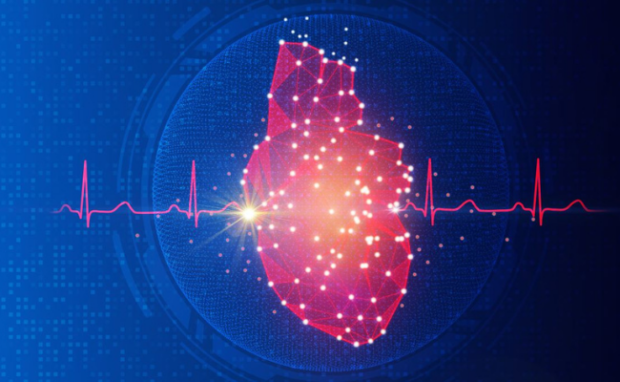Scientists create a heartbeat-charged pacemaker
University of Washington researchers designed a leadless pacemaker that charges partially using energy from a patient’s heartbeat. The current version may only gain 10% of its energy from a beating heart, but researchers say it is a promising start. Soon, they hope to prolong the battery life and expand its accessibility to more patients worldwide.
Future pacemakers may not need to rely on energy cells, unlike existing models. Also, Kenneth A. Ellenbogen, M.D., stated, “These new devices could also improve patients’ quality of life by requiring fewer procedures as they are smaller and last longer.”
This article will discuss how the researchers created a pacemaker powered by heartbeats. Later, I will cover other innovations that may improve cardiovascular health.
How did researchers create this new pacemaker?

Let’s discuss how a pacemaker works before I can explain how this new one works. A traditional pacemaker has tiny wires called leads that link to the heart.
It has another lead on another end that connects to a generator and a battery underneath the skin of the left shoulder. Also, a transvenous pacemaker has electrodes or sensors to detect the patient’s heartbeat.
That enables the electrodes to send electrical impulses to the heart to maintain a constant beat. Nowadays, modern pacemakers are leadless, all-in-one devices smaller than traditional ones.
They stay within the heart’s right ventricle, so their batteries are harder to replace. They only last 6 to 15 years, and then patients require an operation to replace their leadless pacemaker.
As a result, these are impractical for younger people who may need multiple pacemakers throughout their lives. That is why Babak Nazer, M.D., an associate professor of medicine at the University of Washington, and his team tried to make a pacemaker that gains energy from heartbeats.
You may also like: Dog robot keeps moving without motors
“Mechanical and electrical energy are linked and can be exchanged back and forth,” the study’s lead author said. “Just like ultrasound converts electrical voltage into pressure or sound, we can engineer similar materials onto implantable medical devices to convert the heart’s natural oscillating pressures ‘backward’ into voltage to prolong battery life.”
Nazer’s study involved three prototype devices and tested them in a cardiac pressure simulator to test their energy output based on shifting pressures simulating those of the right ventricle. Also, these devices are about one-third the size of a AAA battery.
The researchers recorded the energy the prototypes produced in response to the simulator’s 60 beats per minute. As a result, they discovered the best pacemaker harvested roughly 10% of the energy required to pace the “next beat.”
What’s next for cardiovascular research?
AI eye checks can predict heart disease risk in less than minute, finds study https://t.co/Ivw73HoWIt
— The Guardian (@guardian) October 5, 2022
One day, we may not need pacemakers to help those with cardiac problems. Instead, we might just print new, healthy hearts for patients! That’s the goal of Stanford University associate professor Mark Skylar-Scott and his team.
He uses a 3D printing machine that uses living tissue instead of polymer or plastic. It layers the tissue to form complex organs like the heart. The Stanford scientists started by taking stem cells, the ones the body uses to create specialized cells.
Then, they apply a special formula to transform them into organ cells for 3D printing tissue. “Each line of stem cells we are developing are genetically engineered to respond to a specific drug,” he said. “Once they sense that drug, they differentiate into specific cell types.”
At the time of writing, the machine has only printed a tube-like structure like a human vein that pumps fluid. The current version can only print one cell at a time, and printing a heart would take a thousand years.
Nevertheless, the Stanford team hopes it could become a viable healthcare solution. Also, the British Journal of Opthalmology created an AI health test that conducts cardiovascular screenings by checking a person’s retina.
You may also like: Google Maps helps beat traffic jams
Alicja Rudnicka, the study’s lead author, said, “This AI tool could let someone know in 60 seconds or less their level of risk.” The researchers call it QUARTZ (QUantitative Analysis of Retinal vessels Topology and siZe) to check heart health via eye scans.
It uses a database of retinal images from 88,052 UK Biobank participants and 7,411 people from a European Prospective Investigation into Cancer (EPIC)-Norfolk study.
QUARTZ compares a patient’s eye scans to these photos so that it can diagnose potential issues. For example, if your eye scan is similar to a stroke patient, it would say you have a high risk for it.
Conclusion
University of Washington scientists designed a leadless pacemaker that gets energy from heartbeats. It requires more research and development, but study co-author Kenneth A. Ellenbogen, M.D. said they’re on the right track.
“This experimental study provides valuable information on harvesting energy from the heart to recharge pacemaker batteries. These new devices could also improve patients’ quality of life by requiring fewer procedures as they are smaller and last longer,” he said.
You can read more about the pacemaker study on its EurekAlert webpage. Also, check out more digital tips and trends at Inquirer Tech.